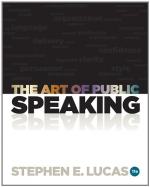We see or hear or feel or taste or smell something and the sensation passes away. Yet we are conscious of a greater or lesser ability to reproduce such feelings at will. Two considerations, in general, will govern the vividness of the image thus evoked—the strength of the original impression, and the reproductive power of one mind as compared with another. Yet every normal person will be able to evoke images with some degree of clearness.
The fact that not all minds possess this imaging faculty in anything like equal measure will have an important bearing on the public speaker’s study of this question. No man who does not feel at least some poetic impulses is likely to aspire seriously to be a poet, yet many whose imaging faculties are so dormant as to seem actually dead do aspire to be public speakers. To all such we say most earnestly: Awaken your image-making gift, for even in the most coldly logical discourse it is sure to prove of great service. It is important that you find out at once just how full and how trustworthy is your imagination, for it is capable of cultivation—as well as of abuse.
Francis Galton[29] says: “The French appear to possess the visualizing faculty in a high degree. The peculiar ability they show in pre-arranging ceremonials and fetes of all kinds and their undoubted genius for tactics and strategy show that they are able to foresee effects with unusual clearness. Their ingenuity in all technical contrivances is an additional testimony in the same direction, and so is their singular clearness of expression. Their phrase figurez-vous, or picture to yourself, seems to express their dominant mode of perception. Our equivalent, of ‘image,’ is ambiguous.”
But individuals differ in this respect just as markedly as, for instance, the Dutch do from the French. And this is true not only of those who are classified by their friends as being respectively imaginative or unimaginative, but of those whose gifts or habits are not well known.
Let us take for experiment six of the best-known types of imaging and see in practise how they arise in our own minds.
By all odds the most common type is, (a) the visual image. Children who more readily recall things seen than things heard are called by psychologists “eye-minded,” and most of us are bent in this direction. Close your eyes now and re-call—the word thus hyphenated is more suggestive—the scene around this morning’s breakfast table. Possibly there was nothing striking in the situation and the image is therefore not striking. Then image any notable table scene in your experience—how vividly it stands forth, because at the time you felt the impression strongly. Just then you may not have been conscious of how strongly the scene was laying hold upon you, for often we are so intent upon what we see that we give no particular thought to the fact that it is impressing us. It may surprise you to learn how accurately you are able to image a scene when a long time has elapsed between the conscious focussing of your attention on the image and the time when you saw the original.




